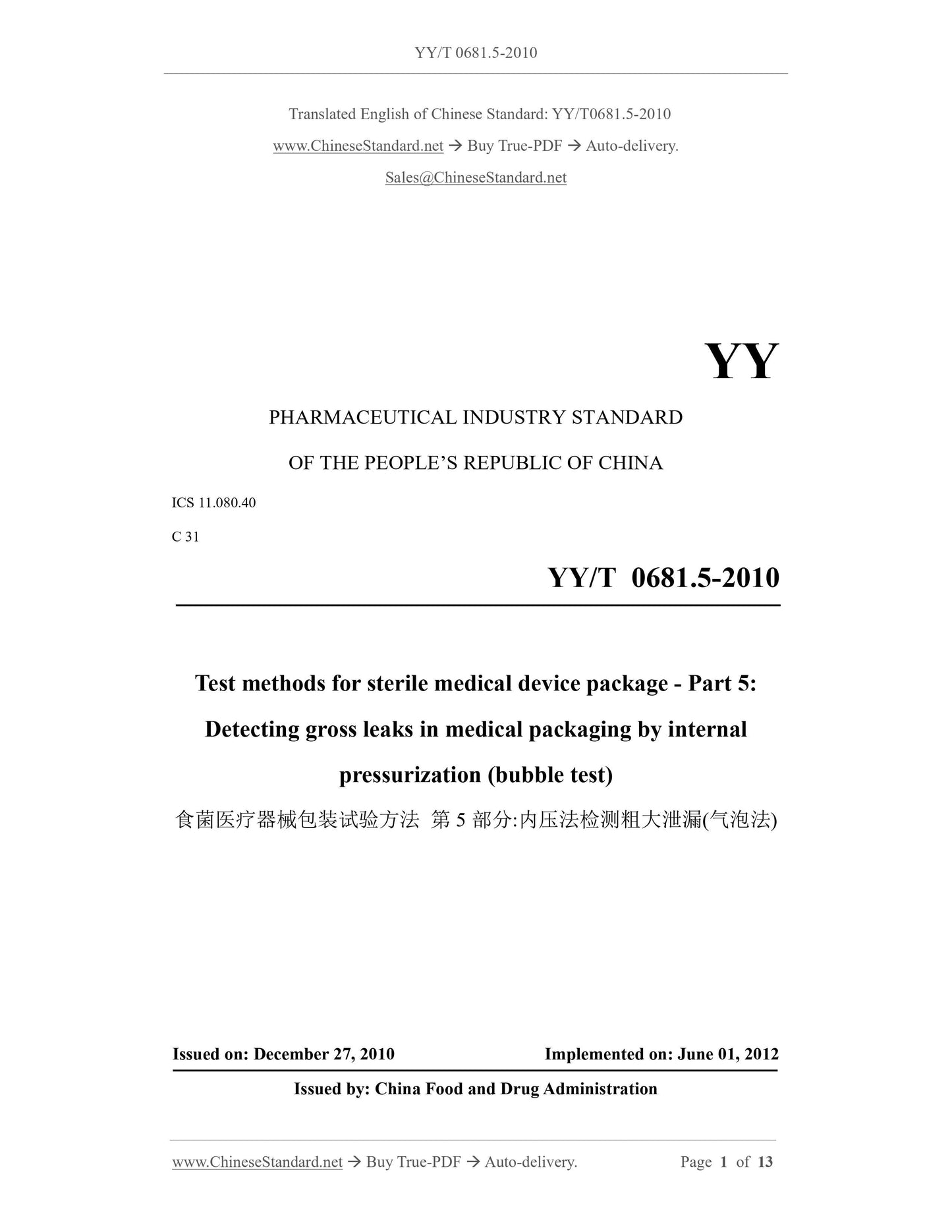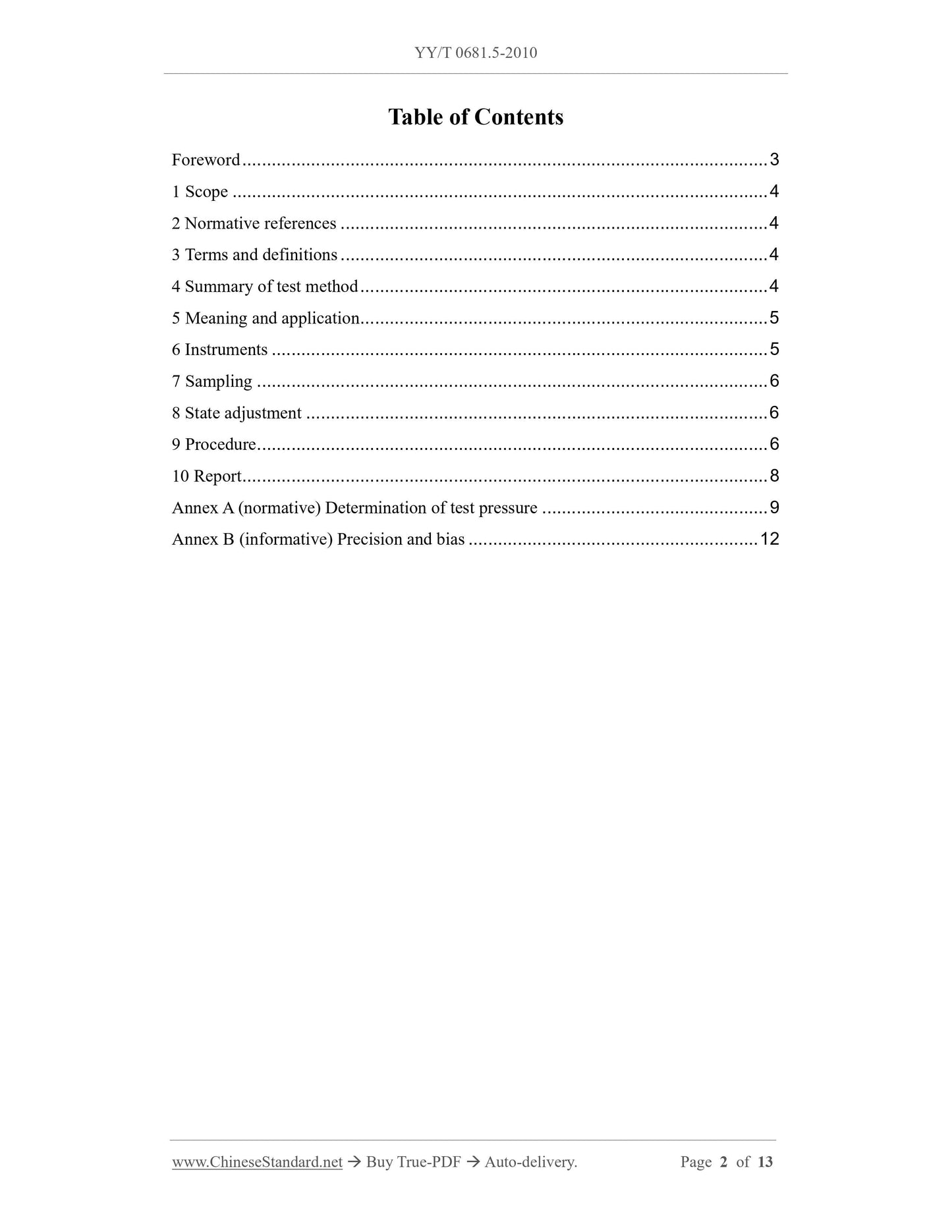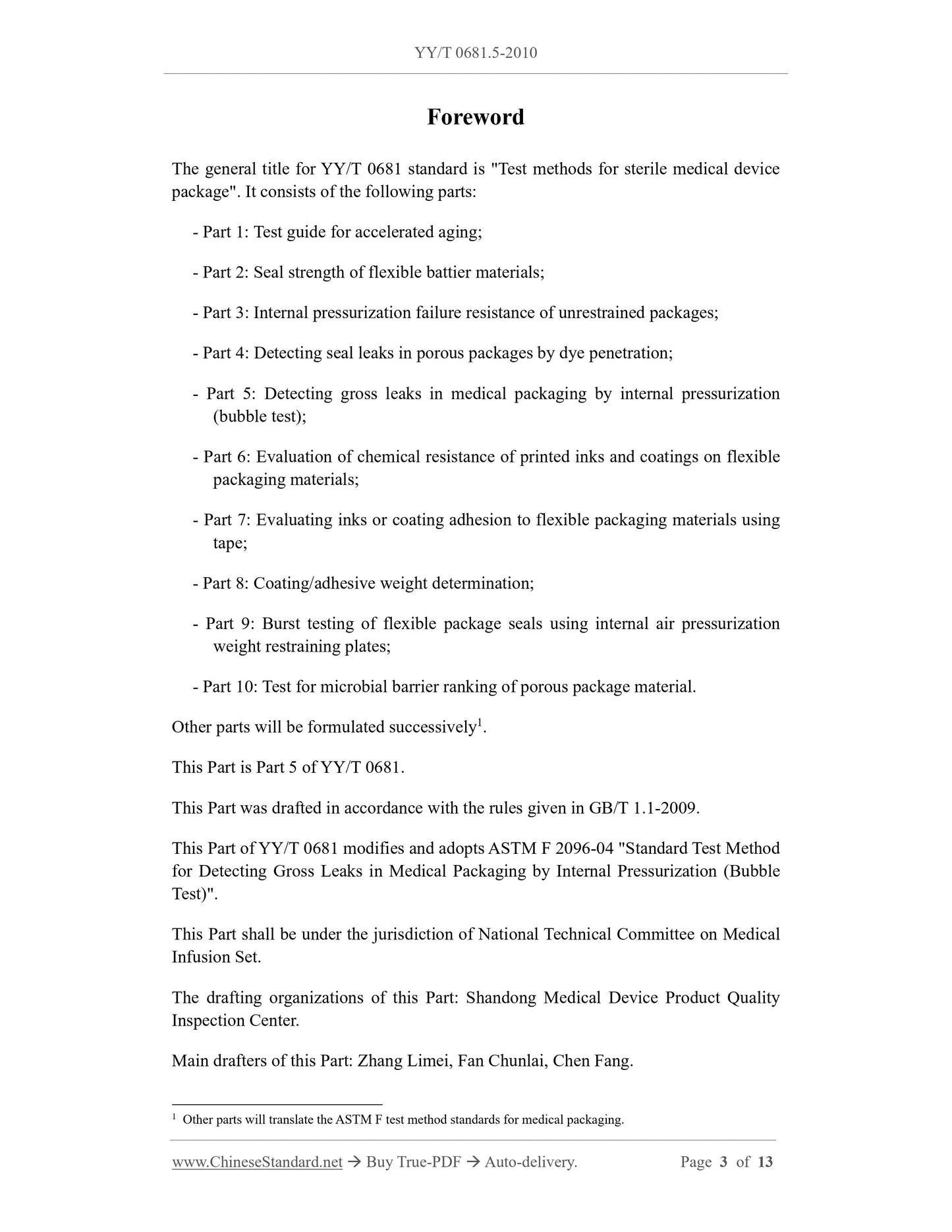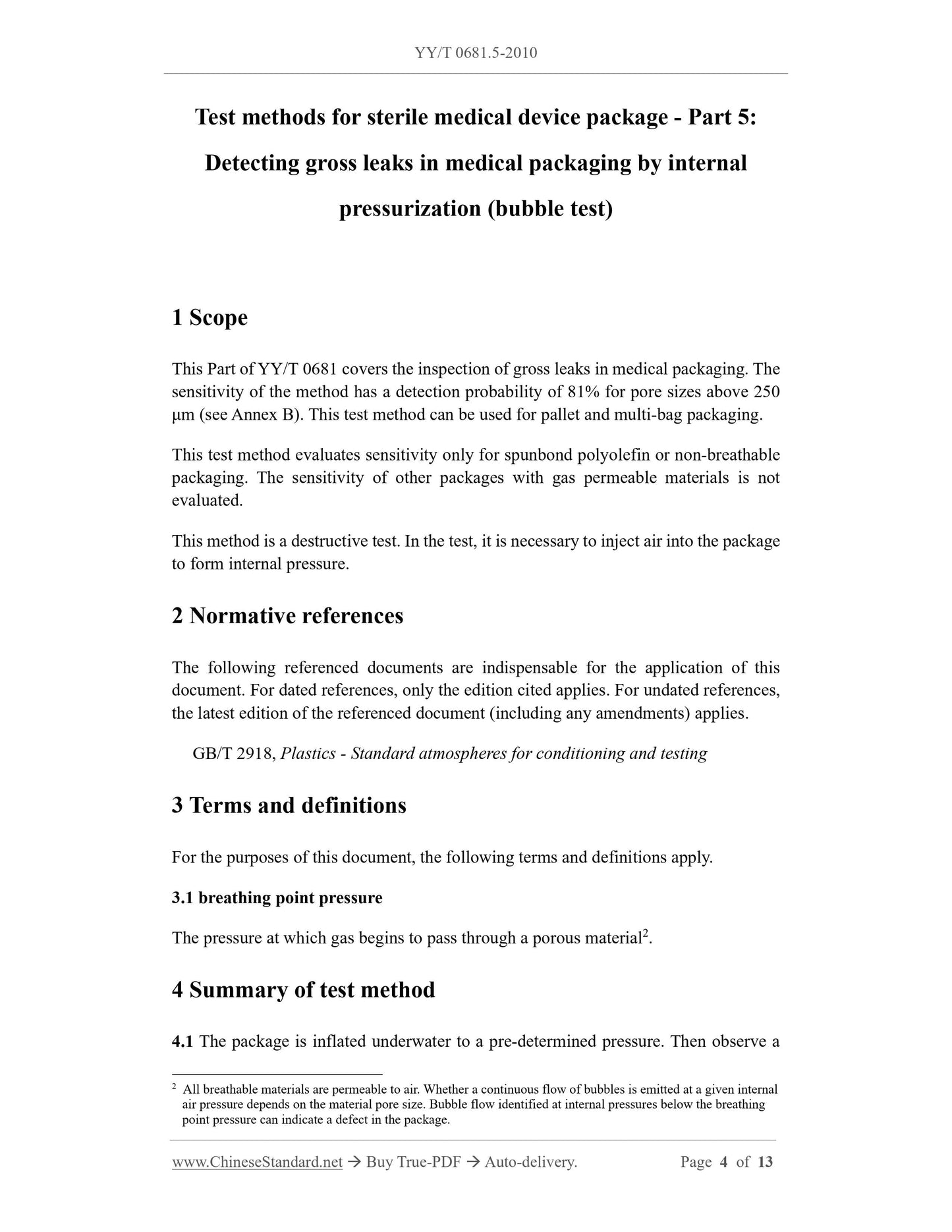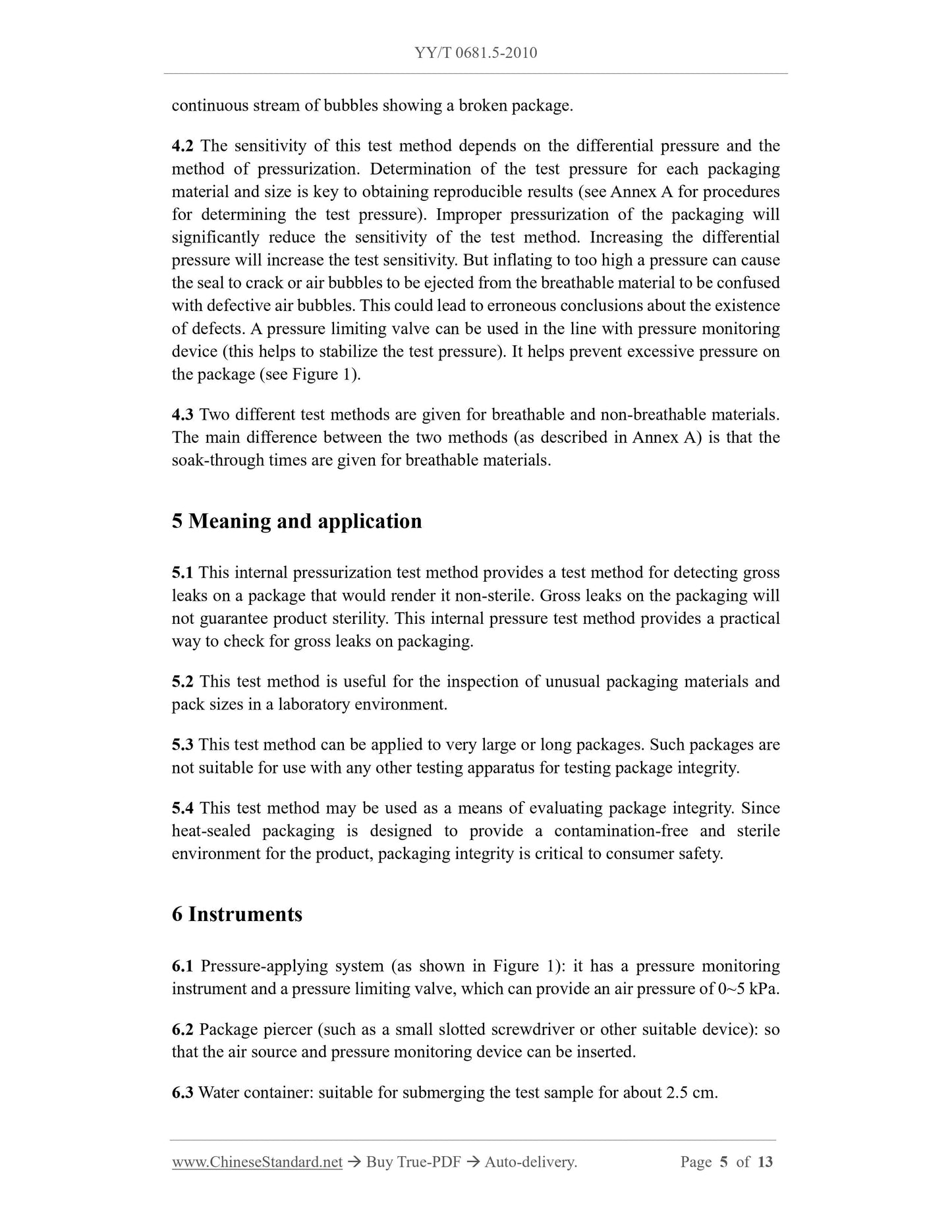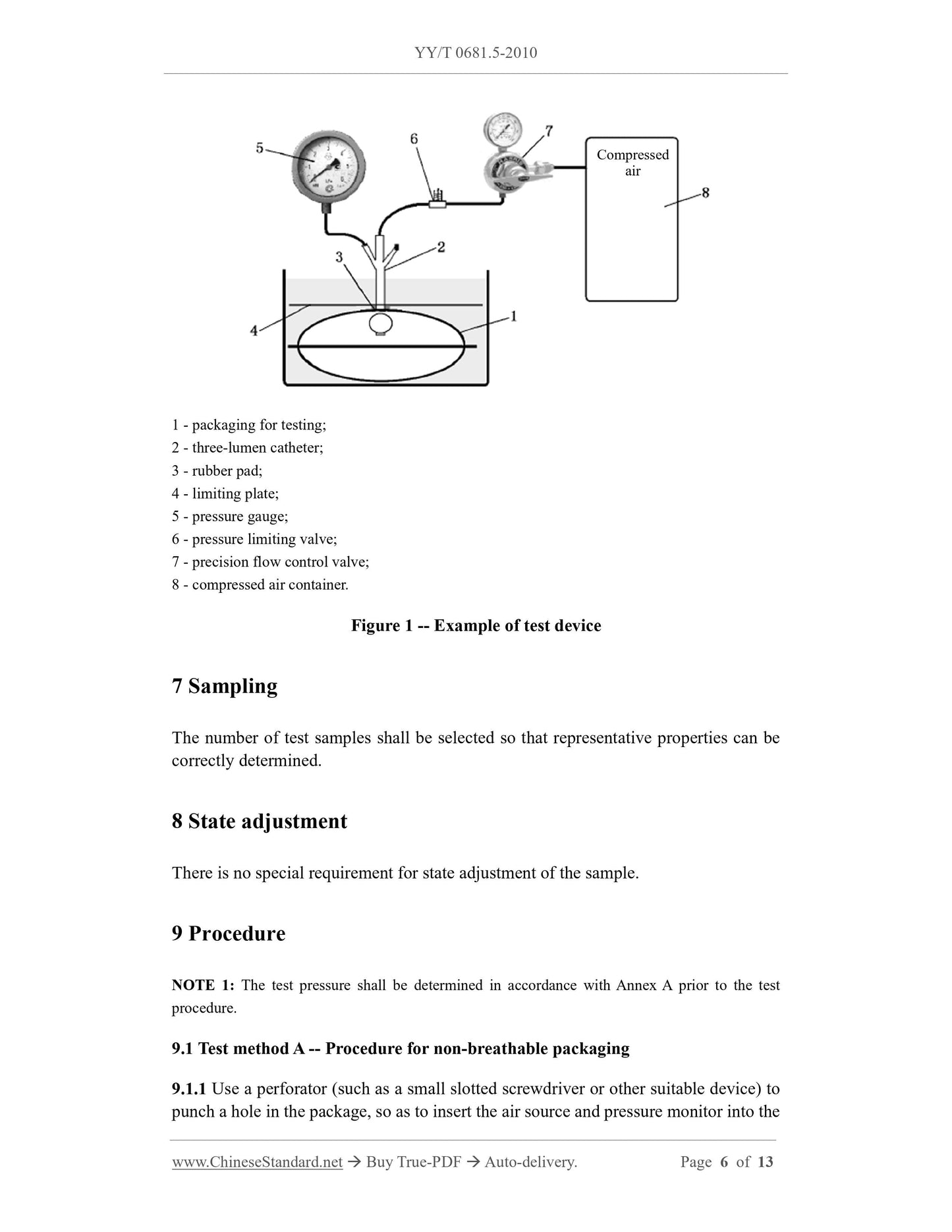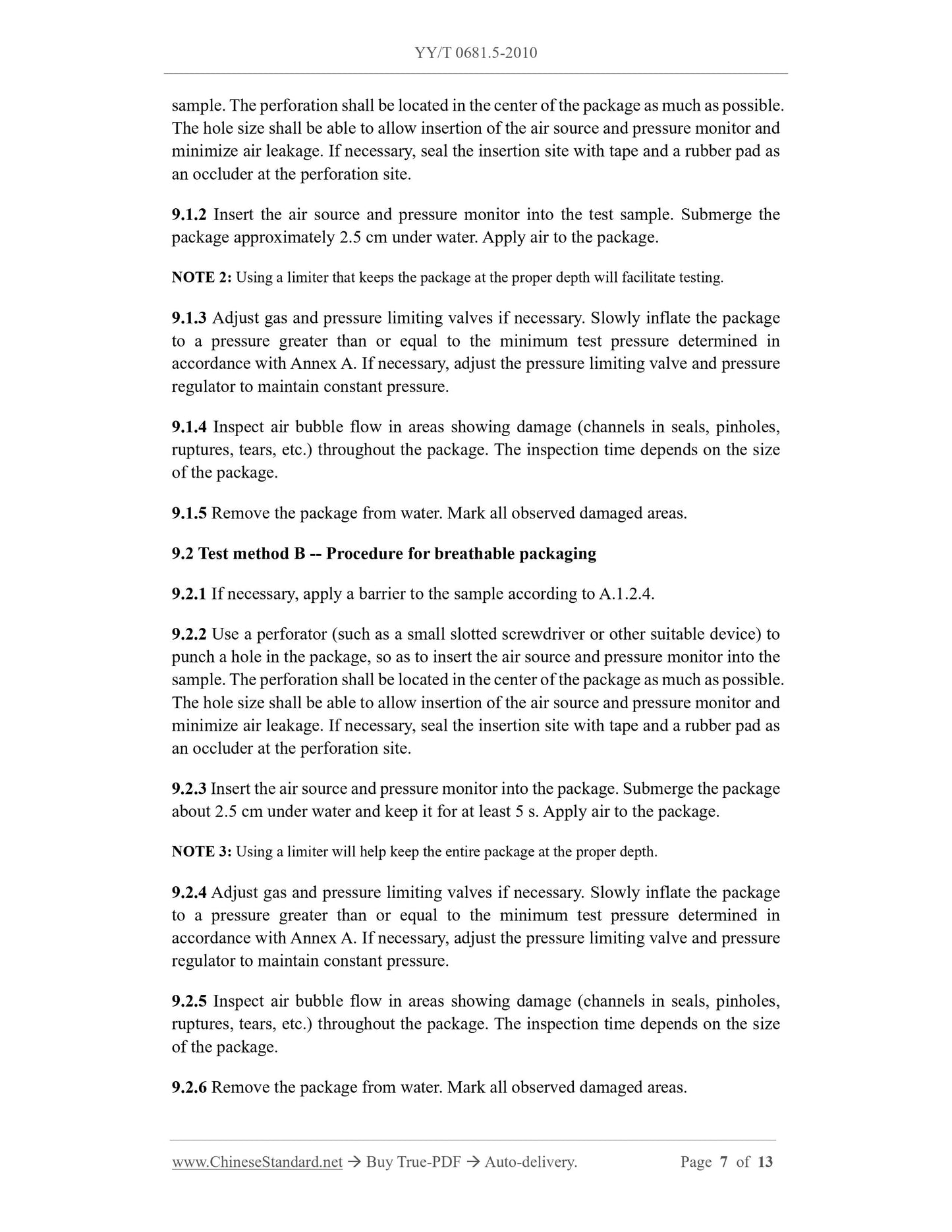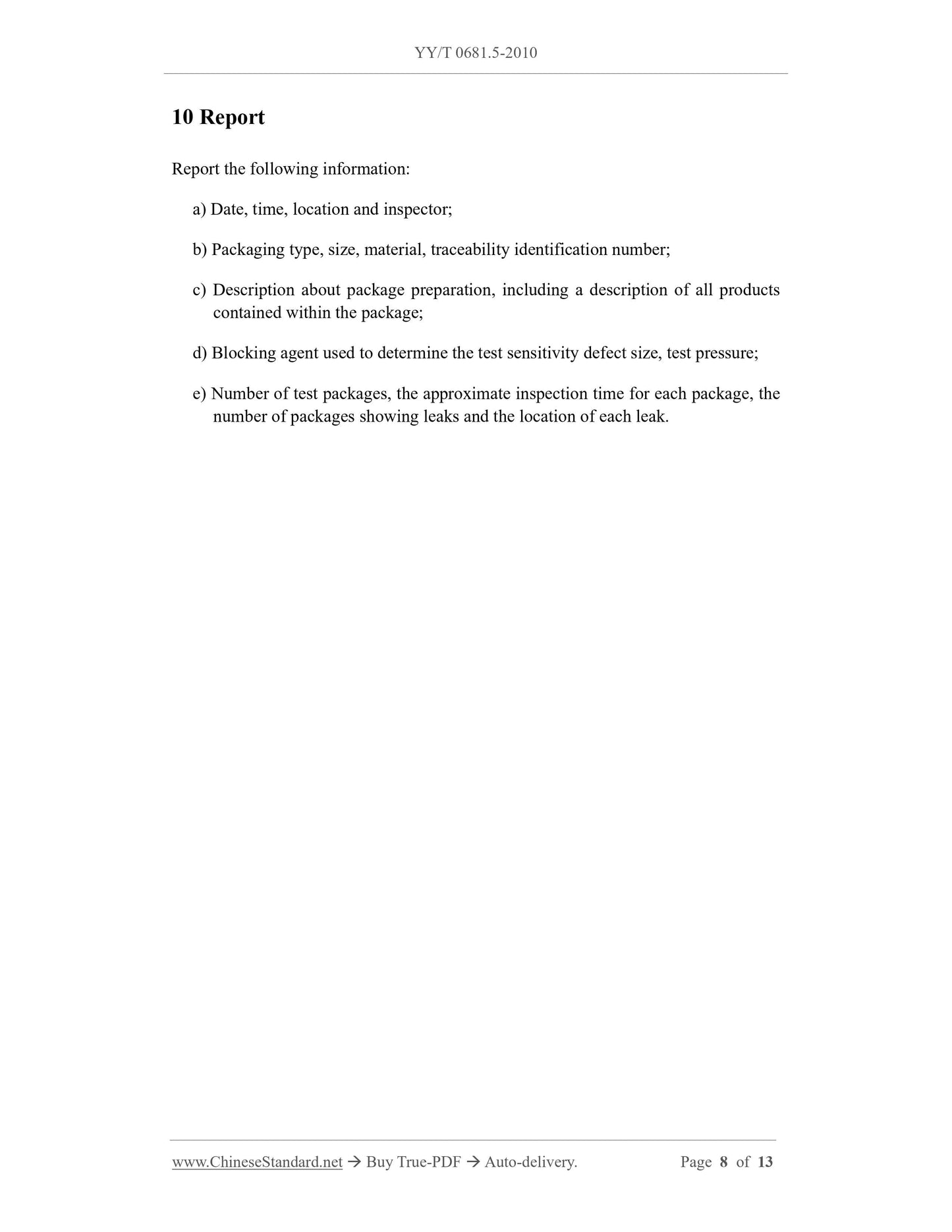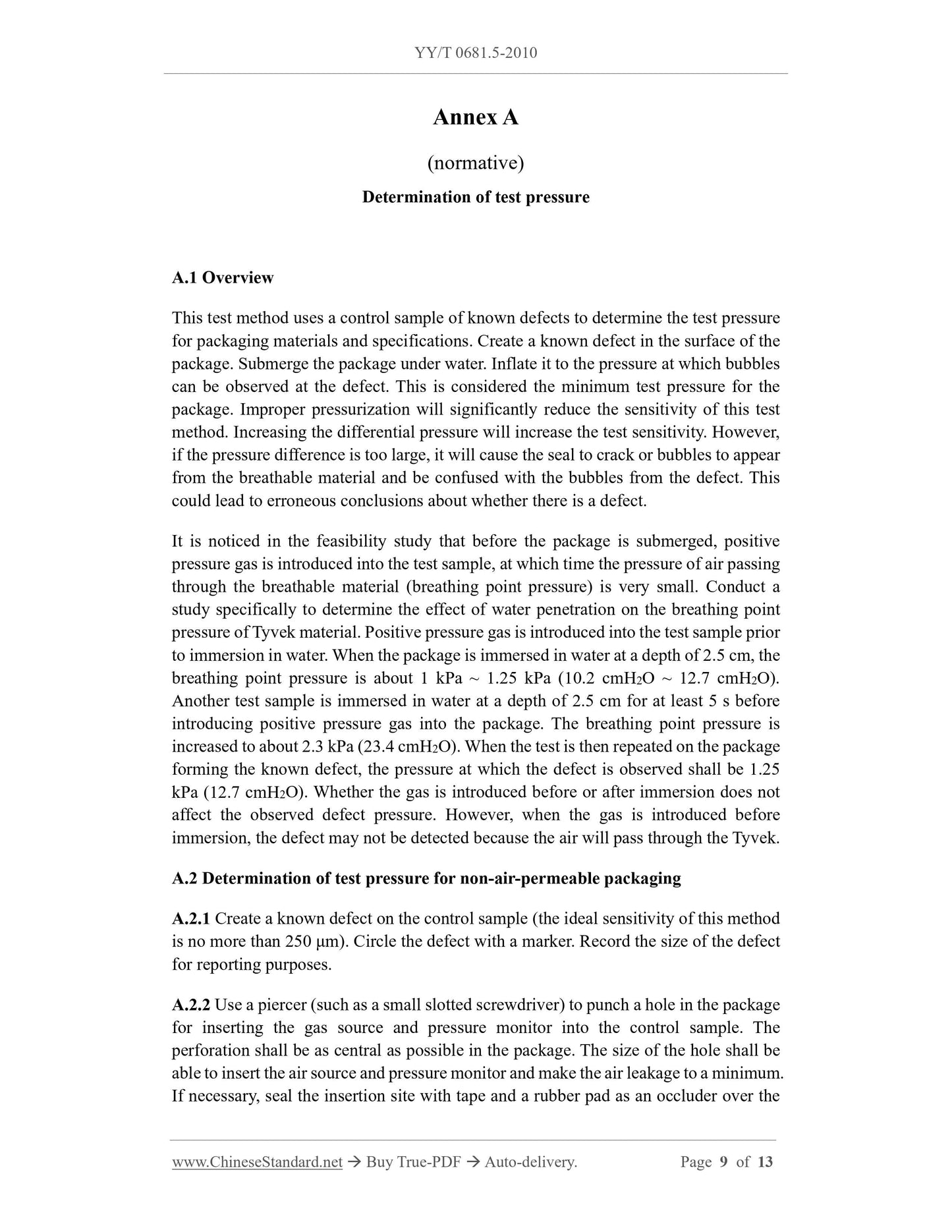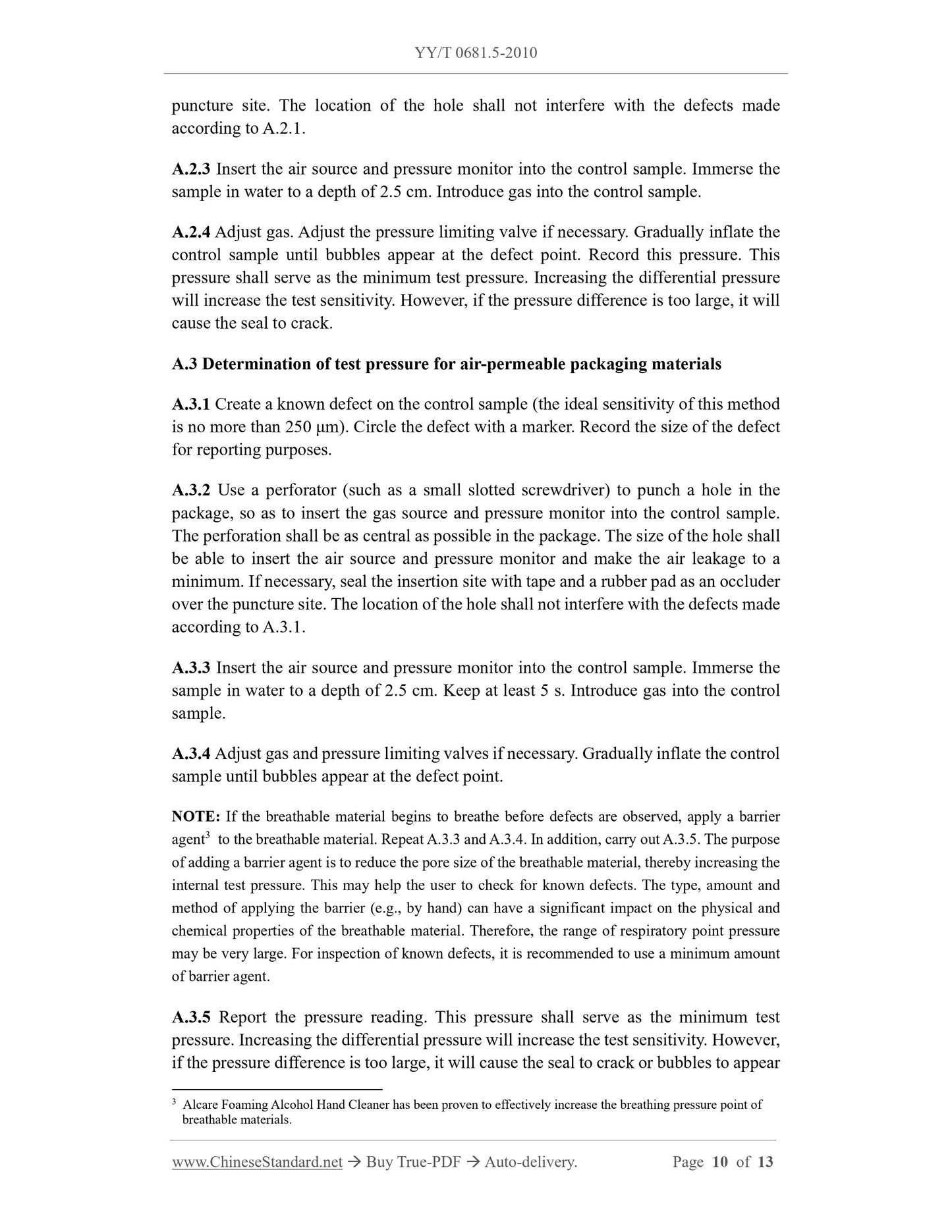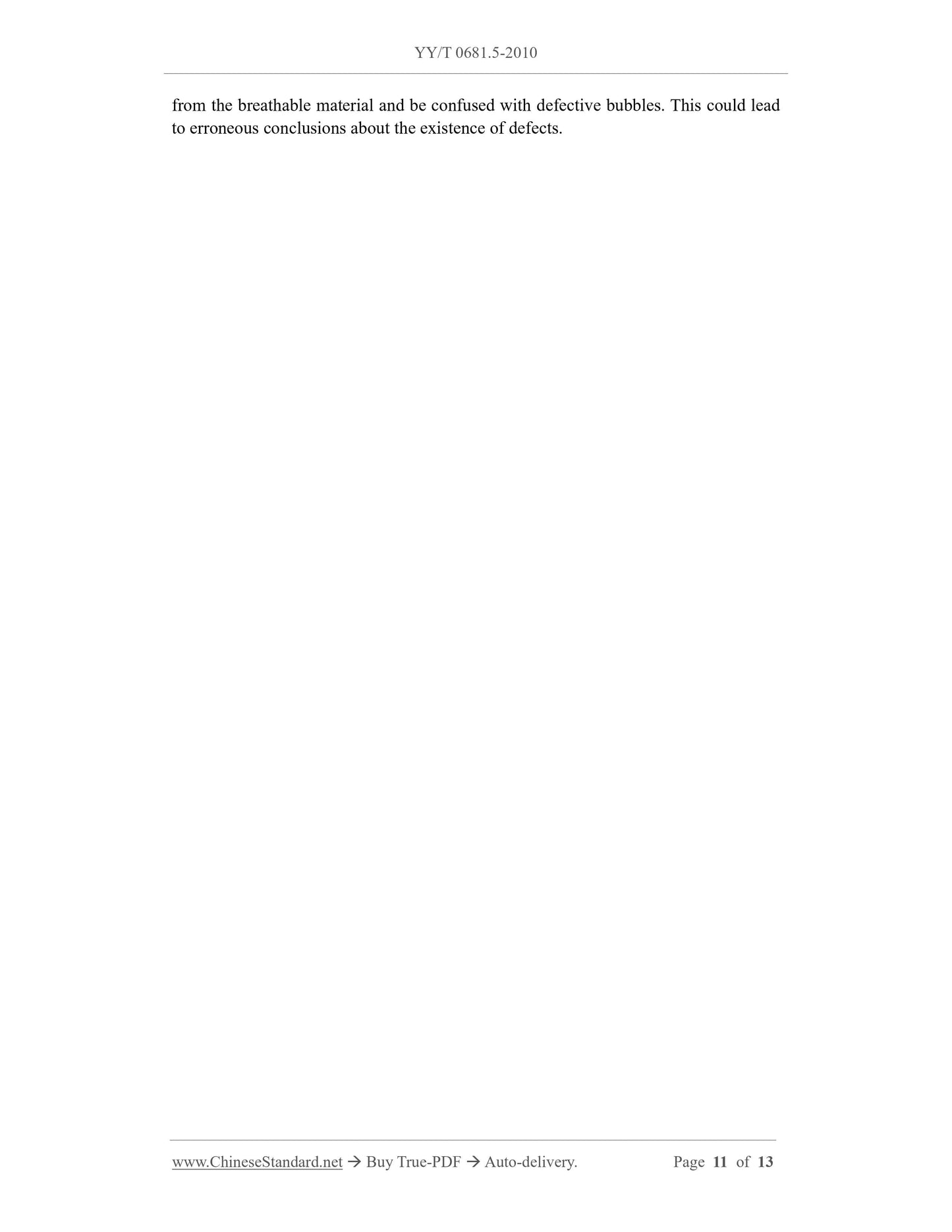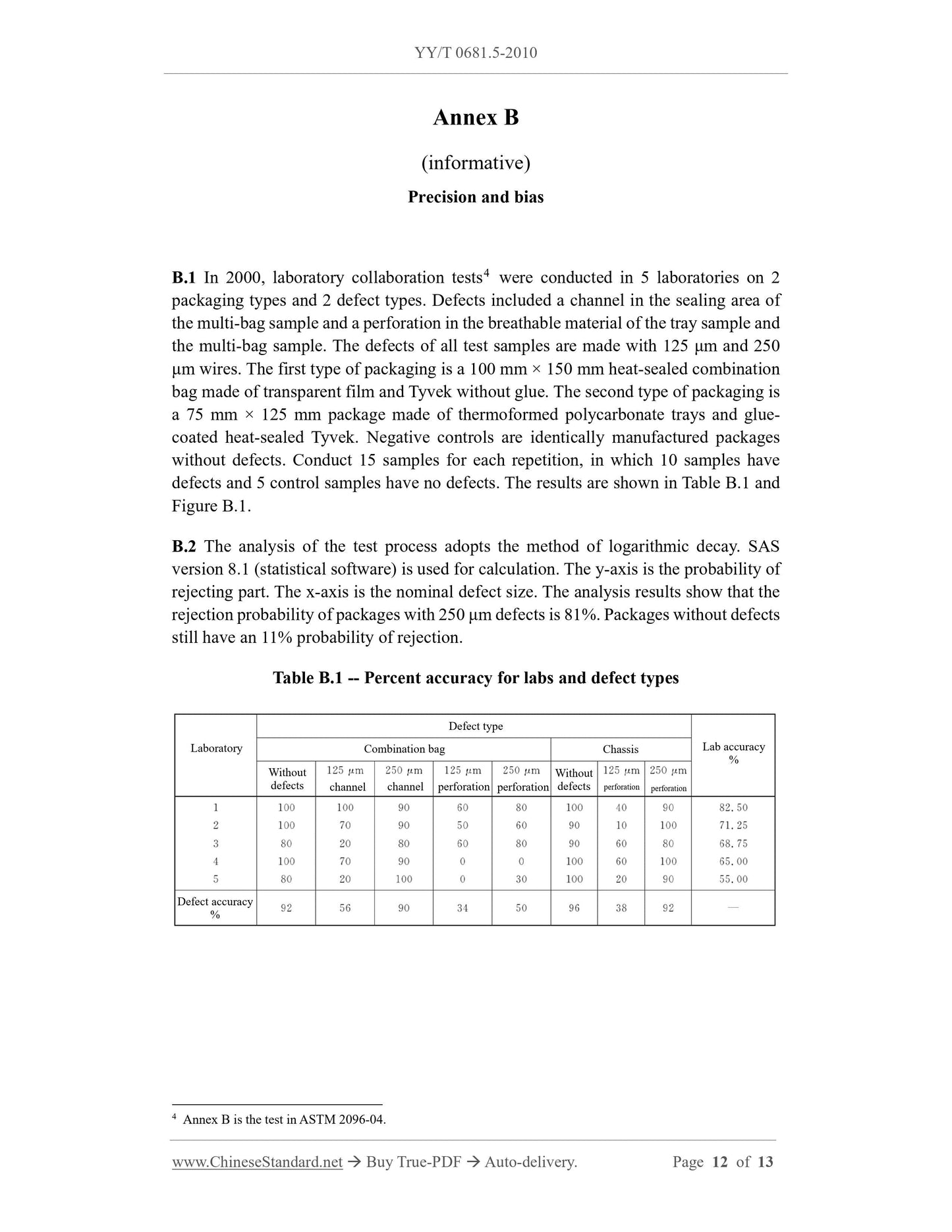1
/
of
12
www.ChineseStandard.us -- Field Test Asia Pte. Ltd.
YY/T 0681.5-2010 English PDF (YY/T0681.5-2010)
YY/T 0681.5-2010 English PDF (YY/T0681.5-2010)
Regular price
$185.00
Regular price
Sale price
$185.00
Unit price
/
per
Shipping calculated at checkout.
Couldn't load pickup availability
YY/T 0681.5-2010: Test methods for sterile medical device package. Part 5: Detecting gross leaks in medical packaging by internal pressurization (bubble test)
Delivery: 9 seconds. Download (and Email) true-PDF + Invoice.Get Quotation: Click YY/T 0681.5-2010 (Self-service in 1-minute)
Newer / historical versions: YY/T 0681.5-2010
Preview True-PDF
Scope
This Part of YY/T 0681 covers the inspection of gross leaks in medical packaging. Thesensitivity of the method has a detection probability of 81% for pore sizes above 250
μm (see Annex B). This test method can be used for pallet and multi-bag packaging.
This test method evaluates sensitivity only for spunbond polyolefin or non-breathable
packaging. The sensitivity of other packages with gas permeable materials is not
evaluated.
This method is a destructive test. In the test, it is necessary to inject air into the package
to form internal pressure.
Basic Data
| Standard ID | YY/T 0681.5-2010 (YY/T0681.5-2010) |
| Description (Translated English) | Test methods for sterile medical device package. Part 5: Detecting gross leaks in medical packaging by internal pressurization (bubble test) |
| Sector / Industry | Medical Device and Pharmaceutical Industry Standard (Recommended) |
| Classification of Chinese Standard | C31 |
| Classification of International Standard | 11.080.40 |
| Word Count Estimation | 10,160 |
| Date of Issue | 2010-12-27 |
| Date of Implementation | 2012-06-01 |
| Quoted Standard | GB/T 2918 |
| Adopted Standard | ASTM F2096-2004, MOD |
| Regulation (derived from) | State Food and Drug Administration Notice 2010 No. 97 |
| Issuing agency(ies) | State Food and Drug Administration |
| Summary | This standard specifies the medical packaging coarse leak test. Sensitivity of the method for the detection aperture 250��m probability of more than 81% (see Appendix B). This test method can be used pallets and mix bag. This test method is only permeable spunbonded polyolefin packaging evaluate sensitivity or to other packaging materials with gas permeability not evaluate its sensitivity. This method is destructive testing, tests need to be injected into the air inside of the package, the formation of internal pressure. |
Share
